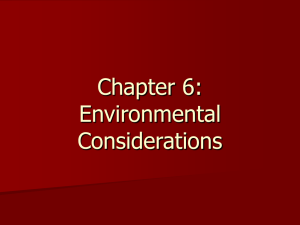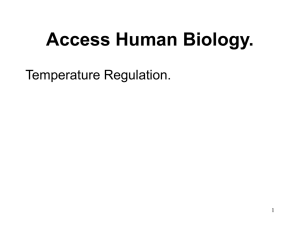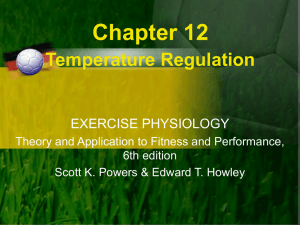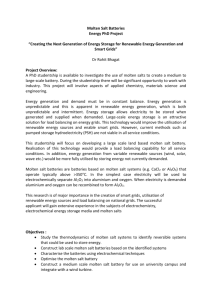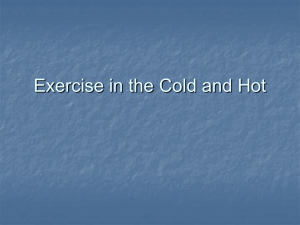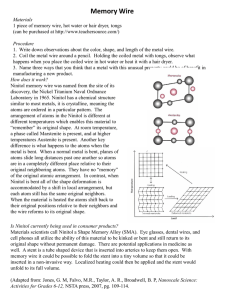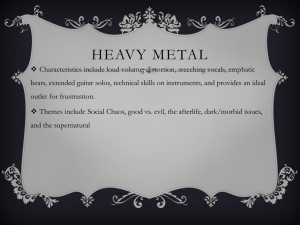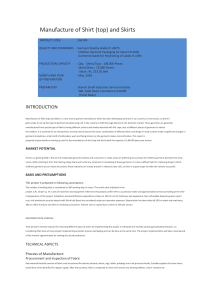Heat Stress
advertisement
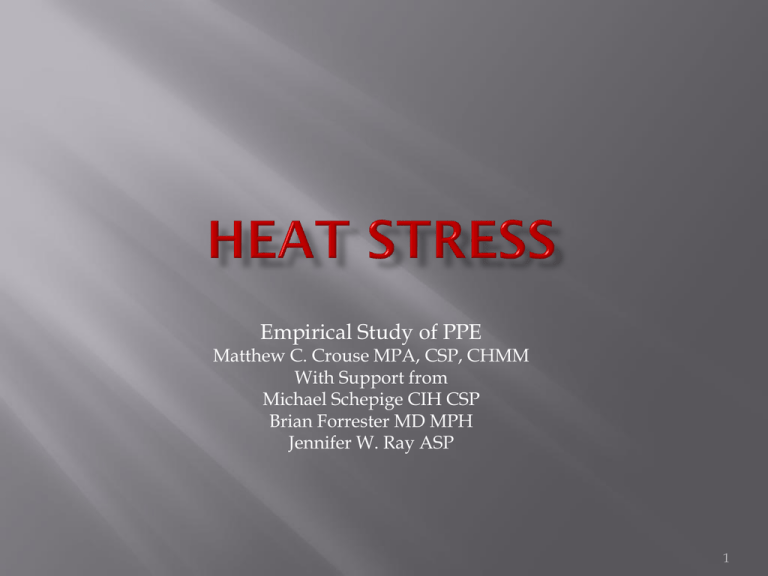
Empirical Study of PPE Matthew C. Crouse MPA, CSP, CHMM With Support from Michael Schepige CIH CSP Brian Forrester MD MPH Jennifer W. Ray ASP 1 1. 2. 3. 4. 5. 6. 7. 8. 9. 10. farmers are feeding their chickens crushed ice to keep them from laying hard-boiled eggs. the cows are giving evaporated milk. the trees are whistling for the dogs. you learn that a seat belt makes a pretty good branding iron. Any temperature below 90, you feel a bit chilly. you've experienced condensation on your butt from the hot water in the toilet bowl. you discover that you can get a sunburn through your car window. you notice the best parking place is determined by shade instead of distance. your biggest bicycle wreck fear is, "What if I get knocked out and end up lying on the pavement and cook to death?" you realize that asphalt has a liquid state. 2 3 4 5 1. 2. 3. 4. 5. Heat Stroke Heat Exhaustion Heat Cramps Heat Syncope Skin disorders 6 the result of a combination of external factors of heat on the worker and the ability of the worker to dissipate heat Environmental conditions temperature, humidity, heat index Work demands Clothing requirements 7 Potential for work environment to produce heat stress depends on 3 independent factors: 1. Amount of heat generated by the worker over time Related to intensity and type of work performed 2. External heat load function of the ambient temperature plus the radiant temperature 3. Capacity for effective heat removal humidity, air movement, personal health & clothing 8 1. 2. 3. 4. 5. 6. Ambient temperature Radiant temperature Relative humidity Air velocity Physical activity level Clothing cover and permeability 9 Heat Strain: immediate physiological response of the body to heat stress Increase in body temperature, heart rate, and sweating 10 Activity Bicycling Climbing Stairs Domestic Work Driving Heavy labor/factory work Light assembly/inspection Machine operator Office work Resting Standing (inactive) swimming walking on flat surface Rate (kcal/hour) 360-600 360-720 75-300 120-180 210-400 90-160 120-240 75-120 60-90 90-120 300-880 300-400 11 Primary defense against overheating is sweating Each liter of sweat that evaporates removes 600 kcals from the body Healthy adult can sweat up to 1.5 liters of sweat per hour Ability of sweat to carry heat depends on its ability to evaporate Only small amounts of heat are lost by direct convection to air or by radiation Firefightinger'sHeat Stress Study.pdf 12 Enhanced Recovery is critical when PPE must be worn but it is important to remember that air movement for cooling is only effective below core temperature ~98.6 13 Obesity Skin disease Decreased cutaneous blood flow Dehydration Hypotension Cardiac disease with decreased cardiac output 14 Use of alcohol Medications that inhibit sweating, reduce cutaneous blood flow, or cause dehydration Use of drugs that increase metabolic or muscle activity Advanced Age Gender (women produce more internal heat than men performing the same task) 15 Infections Cancer Malnutrition Diabetes Mellitus Hyperthyroidism Cystic fibrosis Scleroderma Healed burns over a substantial body surface area Severe pervasive dermatitis Miliaria (heat rash) 16 Senior Management decides it will improve the safety of employees’ PPE. Amassing an amazing team of experts, analysts, technical professionals, and consultants. Somebody is missing 17 18 Garments on display after molten metal testing at the Greensboro facility. Testing revealed that both uniforms do protect against molten metal splashing. 19 20 1 3 2 21 All previous “problems” were easily identifiable Given the myriad of factors that are influencing heat illness, we are left with the clothing cover and permeability factor. It had been observed that when the employees were wearing Molten Metal Uniform their undergarments were saturated with sweat while the outer garment remained relatively dry for a much longer period of time than that of the previous uniform. Simply put, if the sweat can’t get out then the body’s core temperature will rise and increase the likelihood of heat illness. 22 Hypothesis -If heat can’t get in then heat can’t get out thus increasing core body temperature. Proposal -Measure the core body temperature in an actual but controlled production environment. 23 How is that Measured? Most Accurate is Rectally Alternate is Oral -Hypothalamic Equilibration of sublingual and tympanic membrane 24 A Questemp II dosimeter was used in to measure internal and external temperature. This was equilibrated with an oral thermometer and cross referenced to a Wet Bulb Globe Thermometer (WBGT). 25 The same two healthy adult male employees were utilized throughout the heat trials All tests wore clean 100% cotton jockey stay cool t shirts for undergarments All tests wore new Molten Metal double layer pants – Marlan fabric Hard hats worn for all trials Operation closely supervised and video recorded to ensure consistent effort given during each of the tests All work performed in a limited and controlled environment to be able to reproduce results 26 Personal dosimeter has audible alarm that goes off in their ear at 100.4 F to alert user they are overheating – Never occurred during trial Adequate rest rehydration periods between each test. No more than 4 tests conducted on any given day All garments where the same except the shirts being tested New Molten Metal Uniform - Marlan Fabric Old Molten Metal Shirts – Alusafe Fabric General Duty Uniform – Cotton Fabric Electrical Shirt -FR Heavier Cotton Fabric Old Uniform shirt -Vinex fabric 27 Same Pants, same under shirts, PPE controlled hydration, similar rest cycles, supervised work to verify similar activity 28 Word Summary of Quest Data.docx 29 30 31 32 33 34 35 36 Award from third party Insurance review: Tremendous degree of empirical validation by a Master Black Belt Outstanding, compelling presentation that ought to receive bonus points (community impact, goodwill) for sharing beyond their own corporation, A fabulous story of living risk reduction over policy enforcement, and A level of rigor and discipline in their data validation; you can, unlike so many other “case studies”, take these to the bank. Exceptional demonstration of the true value of building a story on those closest to the risk 37 There a multitude of factors that can affect the human body’s ability to manage heat. Unfortunately, we have little control over most of them whether they are from the environment or from the individual. The one factor we can control is our protective apparel and this testing indicates that the Marlan in the uniform will indeed raise the core body temperature at a rate faster than that of other garments that provide similar protection. Additionally, the retention of heat is extended while wearing this garment. A few tenths of a degree can be the difference between a minor heat illness and a full blown medical emergency. This is particularly evident when heat indexes are above the body’s normal temperature. 38 Understanding this information can help prevent heat related illness or minimize their severity and effect. Proper diet and hydration is just as essential as rest breaks in cooler environments. Encourage employees to maintain their health, hydration, and taking rest breaks in air conditioned environments away from heat exposure will allow the body’s primary cooling mechanism of sweating and evaporation work to regulate homeostasis. 39 How do you manage the heat? 40 41


